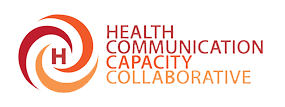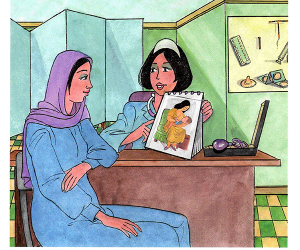Example: Prioritizing Audience Segments
Communication for Healthy Living
As part of its communication strategy, the Communication for Healthy Living (CHL) project in Egypt utilized a life stage approach, which identifies the needs of family members according to their age, or stage in life, and capitalizes on the household as the primary producer of health. By identifying needs according to life stage, CHL could determine desired health behaviors and practices for each stage as well as plan possible interventions.
CHL segmented its audiences based on this life stage approach. One life stage of particular focus was the young family cohort, which consists of young couples under 30 years of age and their children. This audience segment was selected as a strategic entry point into other life stages and was based on demographic factors. Research showed that 60% of the Egyptian population was under 25 years and that 37% of women fell into this young family cohort. Each year in Egypt, around 1 million marriages and 2 million deliveries occur.
Most people are married at a relatively young age, the average being 21 years. This audience also had significant health needs, with much of the unmet need for family planning falling within the younger age group. This cohort represented a key entry point for family planning and maternal and child health messages, and CHL saw an opportunity to reposition family planning as family health. The long-term dividend was potentially large, since healthy beginnings yield long-term healthy practices. In addition, because of their unique position, the young family cohort was essentially part of multiple life stages: the young married stage, with all its fertility and maternal health issues; the older adults stage, with its broader infectious and chronic disease concerns; and the early childhood stage, with the nutrition and immunization concerns for their child.
By examining the demographic, behavioral and health needs trends, CHL was able to select an audience of vital importance not only to the project, but to Egypt’s future, due to its sheer magnitude and potential to impact the country. Reaching this critical audience segment with health information when and where they needed it enabled changes that could last a lifetime.


